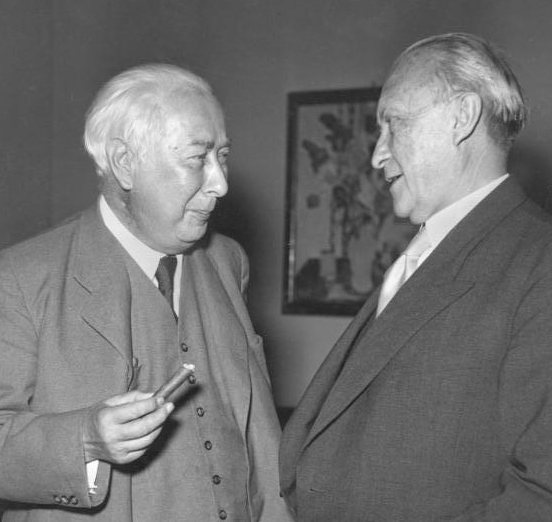… was founded in Heppenheim in Southern Hesse?
The history of the Free Democratic Party (FDP) was quite an eventful one. After having been the political entity that tipped the scale at coalition negotiations for a long time, in 2013 the FDP failed to clear the 5-percent hurdle it had helped to introduce itself at the parliamentary elections for the first time. Since the parliamentary elections in 2017, the Free Democrats have been back in the Reichstag, where the German parliament is held. What hardly anyone knows is that the initiation of the FDP took place in the Rhine-Neckar region, in Heppenheim in Southern Hesse to be precise. It was here that leading liberals from regional associations met in the restaurant called “Zum Halben Mond” in December 1948 in order to found a nation-wide party—the town being a deliberate choice.
Already in October 1847, i.e. almost 100 years earlier, at the climax of the so-called German Vormärz(“pre-March era”), 18 influential liberals from the southwest of Germany gathered at “Zum Halben Mond.” There they conferred about the tense political situation. Germany at that time was a hotchpotch of states. Even though the German Confederation had been founded at the Congress of Vienna in 1815, under the leadership of Austria, the loose union was more and more developing into an executive body of the Restoration. The sovereigns of the states did everything in their power to maintain the legitimacy of the monarchy. Liberal, national and democratic ideas, gaining more and more followers among the bourgeois citizens, were suppressed using police force and legal means. Political parties were forbidden; the freedom of opinion, of the press and of assembly were severely curtailed.
The political opposition, however, was not intimidated by that. They now met secretly, making plans for the future. That was also the case at the gathering in Heppenheim in 1847. Among the participants were many politicians, who later defined the course of the March Revolution and the outcome of the Frankfurt Convention (among them was Friedrich Daniel Bassermann from Mannheim). Like the protagonists of the Hambach festival in Neustadt (1832) had done before, they stood up for the unity of the nation and in the so-called “Heppenheim Programme” demanded, amongst other things, civil rights, freedom of the press, separation of administration and judiciary, liberation from socage service as well as local self-government.
The participants of the meeting in 1948, which took place under very similar general conditions, also referred to these liberal fundamental values. Germany was in ruins after World War II in many ways. Political associations were only allowed to be founded with the consent of the occupying forces, which led to the fact that political parties were constituted only at a local level in the beginning. At the same time, there were efforts to unite the liberal regional associations into one all-German party—in spite of significant differences with regard to political orientation. After a failed attempt to constitute such a party in 1947, the 13 regional associations of the western occupation zones tried it once again in 1948: They met at the “Zum Halben Mond” in Heppenheim and initiated the FDP there on December 11, cementing the restaurant’s place in history. They elected Theodor Heuss as their party leader, who became the first president of the Federal Republic of Germany in 1949. He, by the way, lived in Heidelberg between 1943 and 1945 together with his wife Elly Heuss. There, he founded the Rhein-Neckar-Zeitung, one of the first daily newspapers in post-war Germany, together with Agricola and Hermann Knorr. But that is another story from the Rhine-Neckar region …

